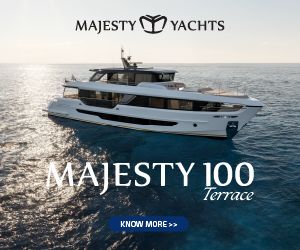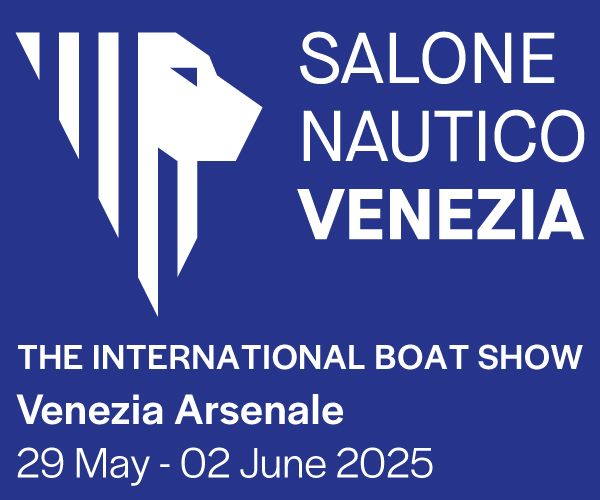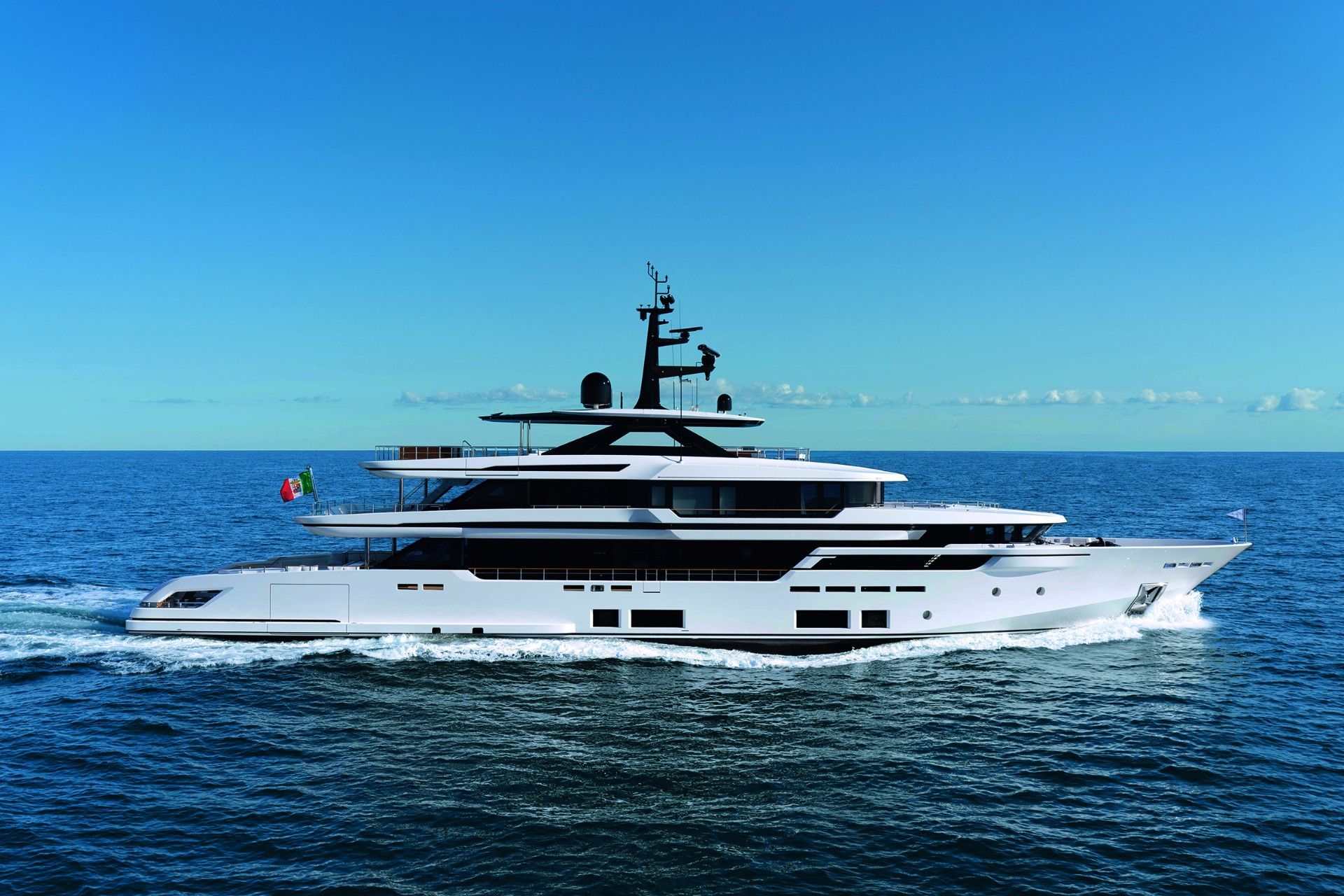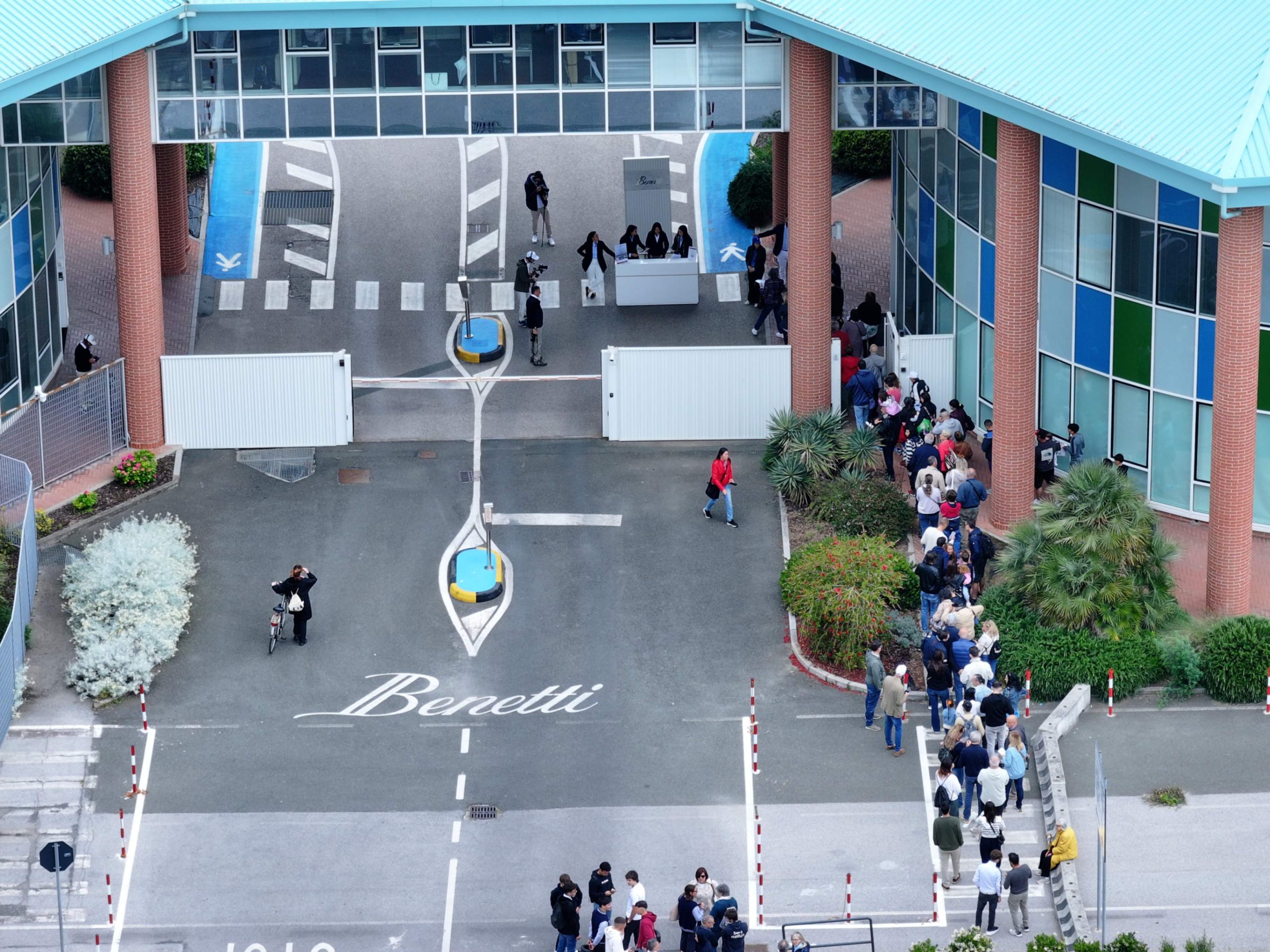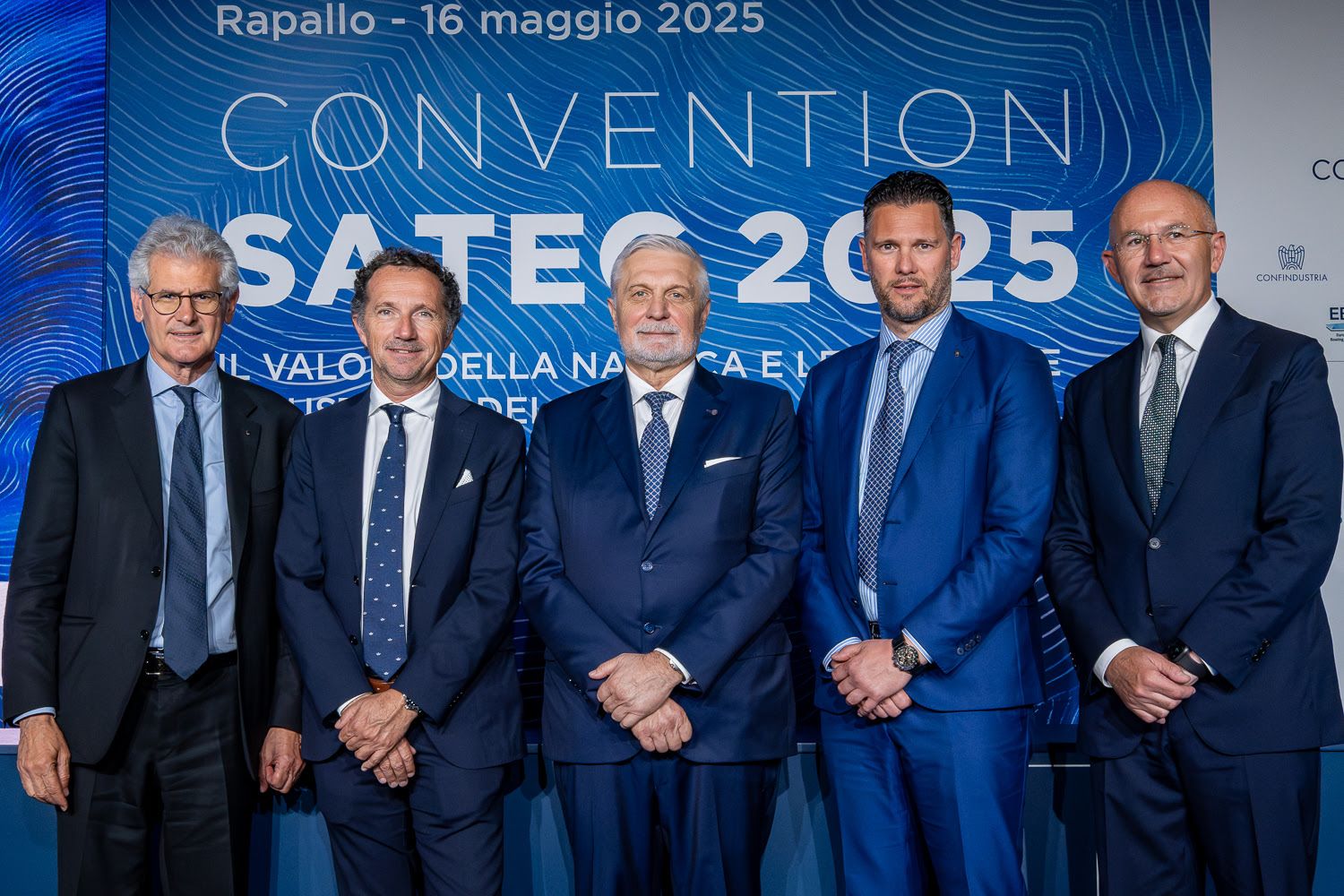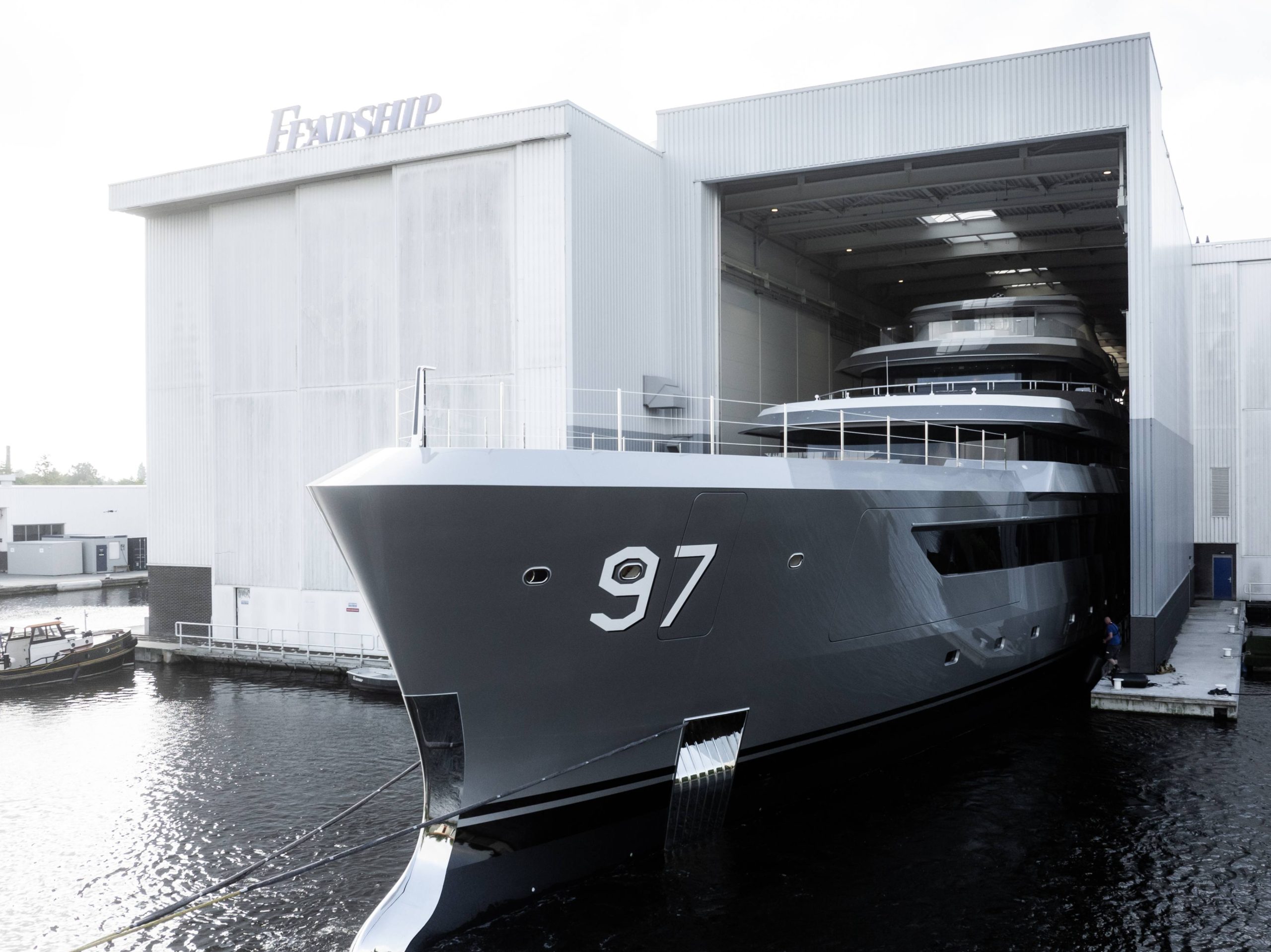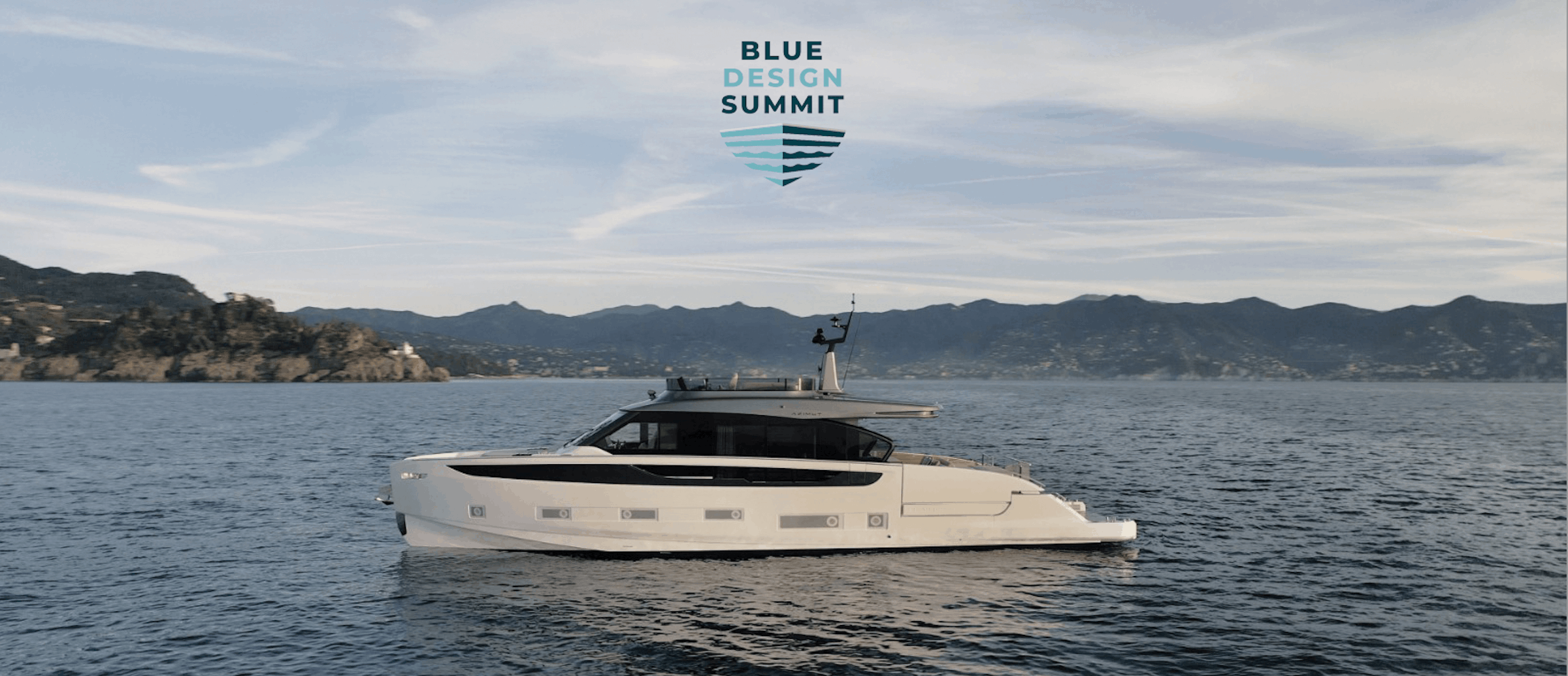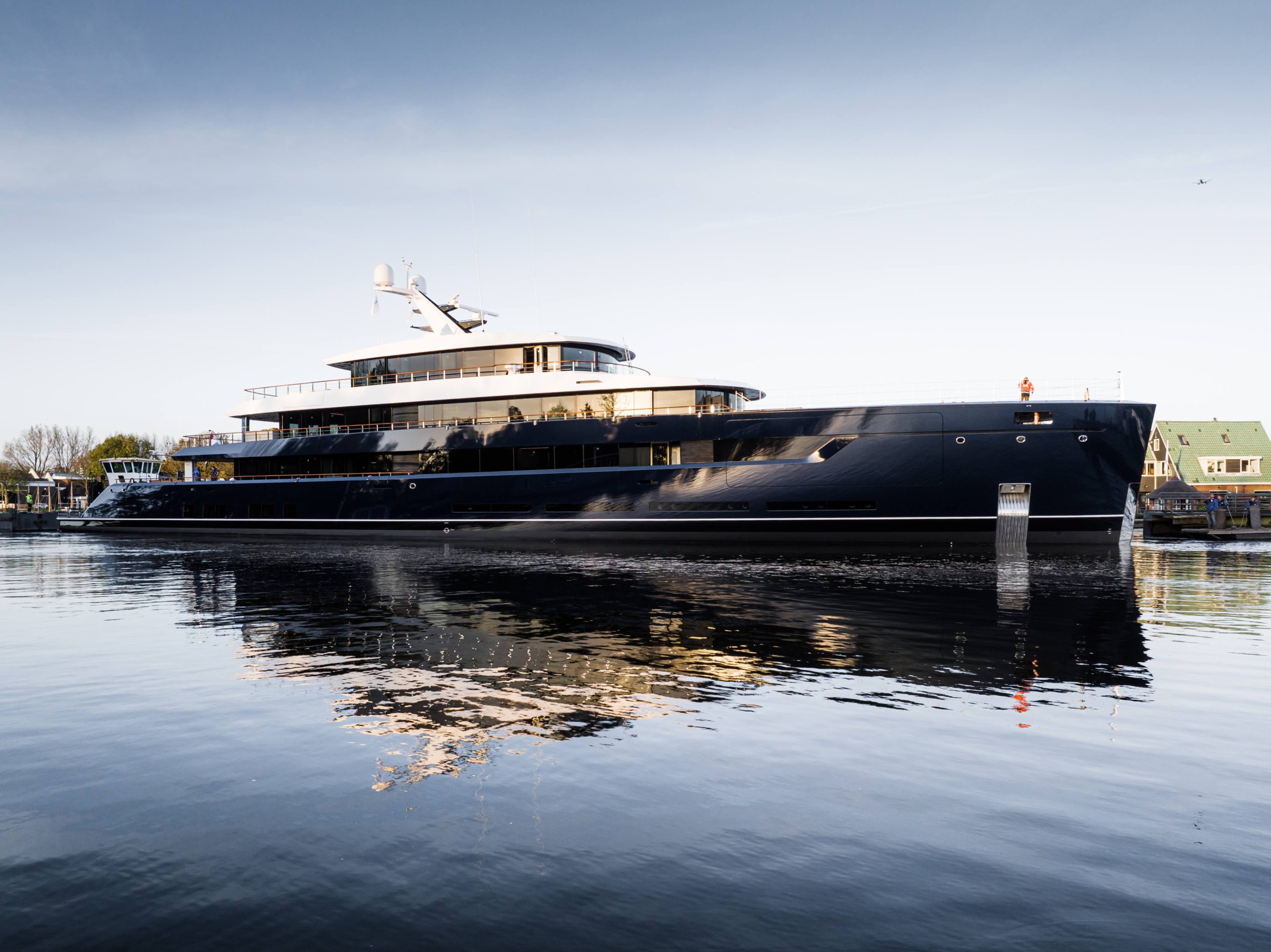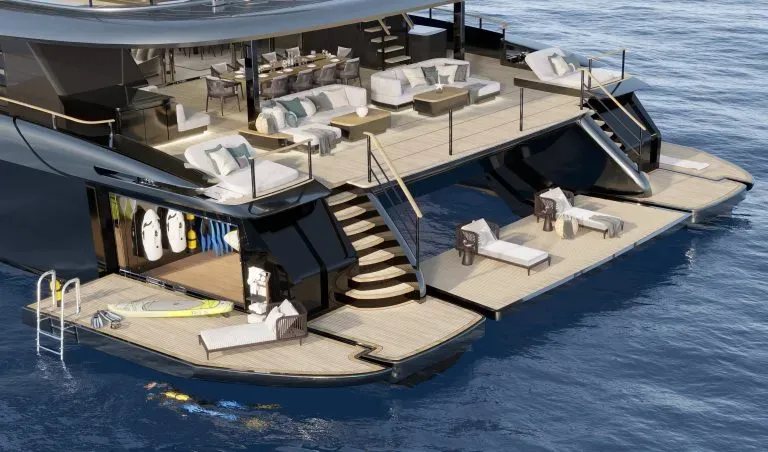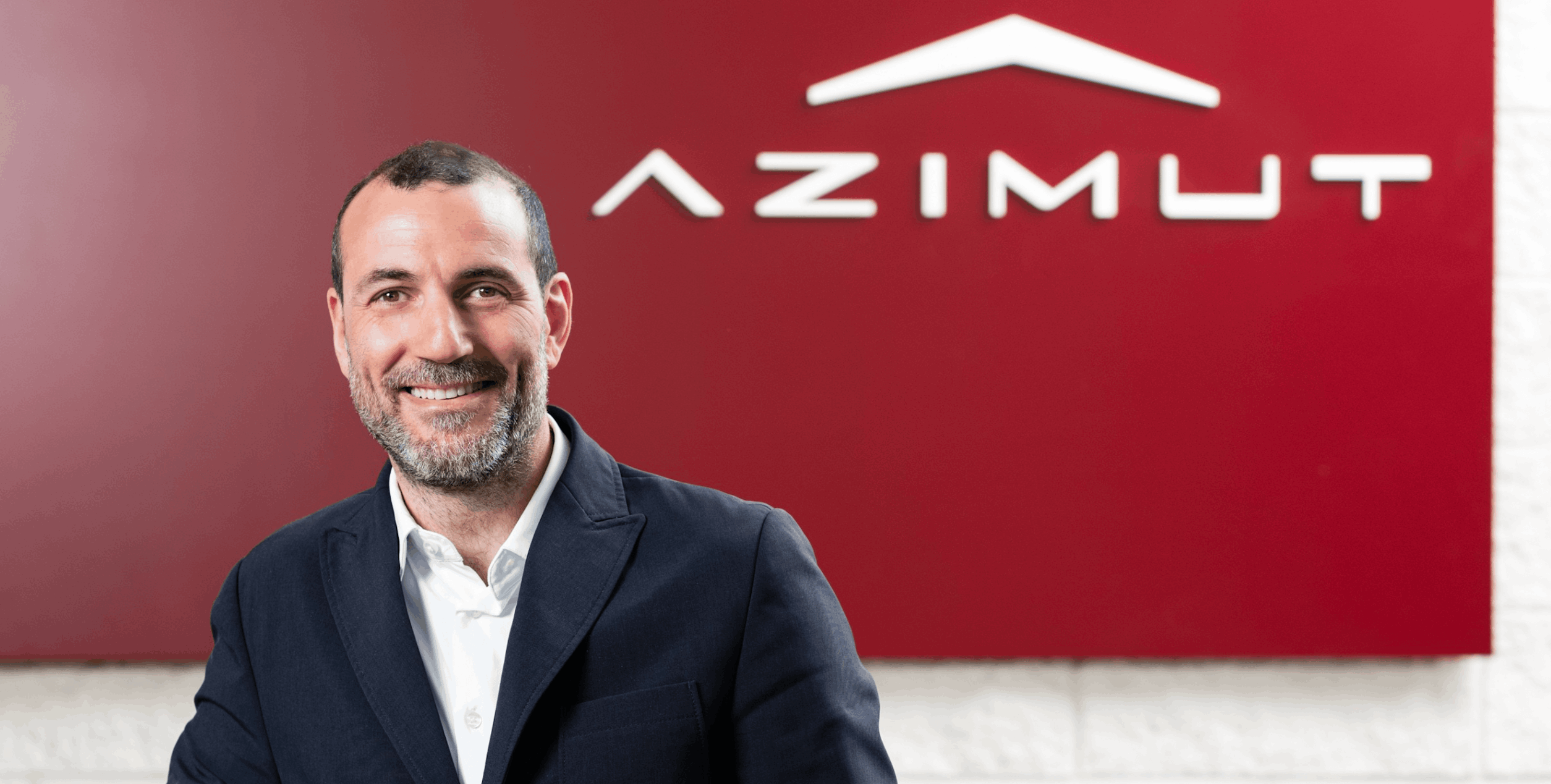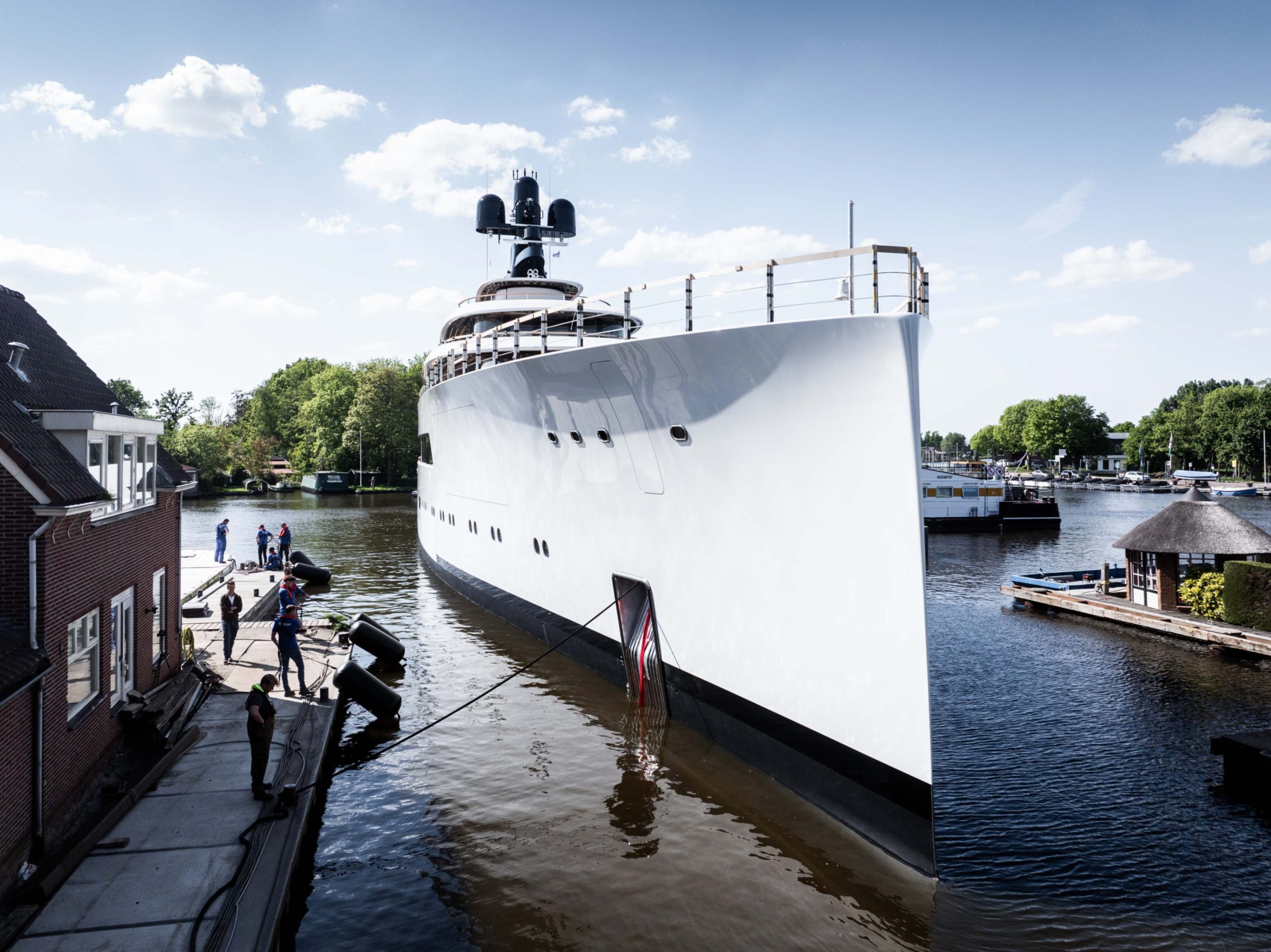150 YEARS OF LÜRSSEN: GERMAN ENGINEERING SINCE 1875
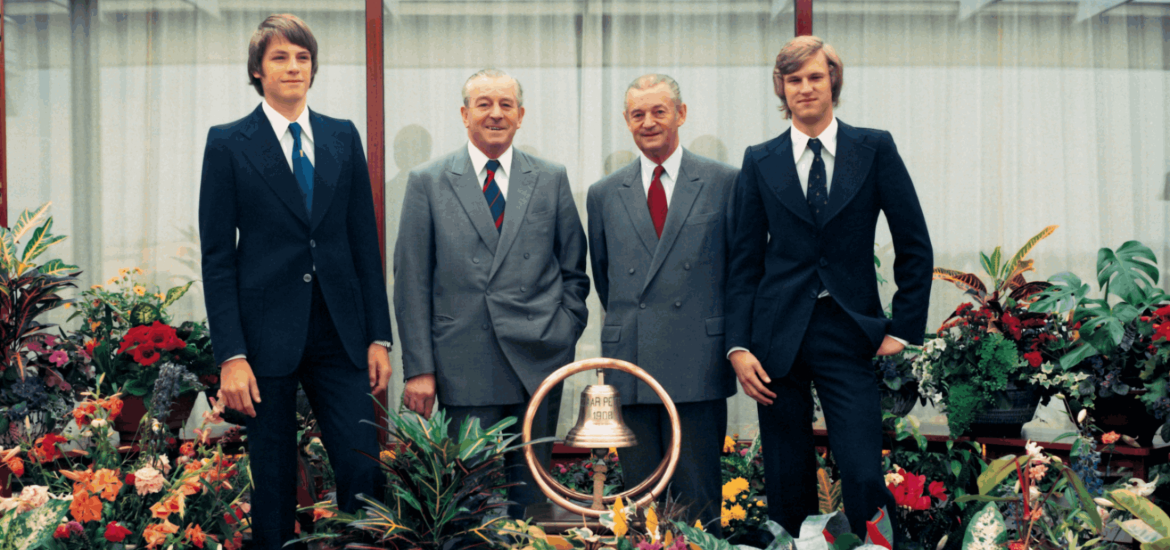
Founded on 27 June 1875, Lürssen is celebrating its 150th anniversary this summer. The family-run business, grown from modest beginnings through just four generations into a premier shipbuilder, has been built upon core principles: quality, innovation, and engineering excellence. These principles remain just as true today. As it celebrates its jubilee, Lürssen prepares to deliver its next step towards a visionary future of yachting.
When Friedrich Lürssen founded Lürssen at just 24 years of age in 1875, he quickly cemented his reputation for building exquisitely tuned rowboats, and later for pioneering the world’s first motorboat with a combustion engine together with Gottlieb Daimler. Those early Lürssen boats were original, stylish, cut from the finest woods, and built to a meticulous standard. Friedrich Lürssen was personally involved from the first cut to the final delivery and famously greeted his team at the gate every morning, without fail. His passion and the precedent he set for quality and performance have become synonymous with Lürssen.
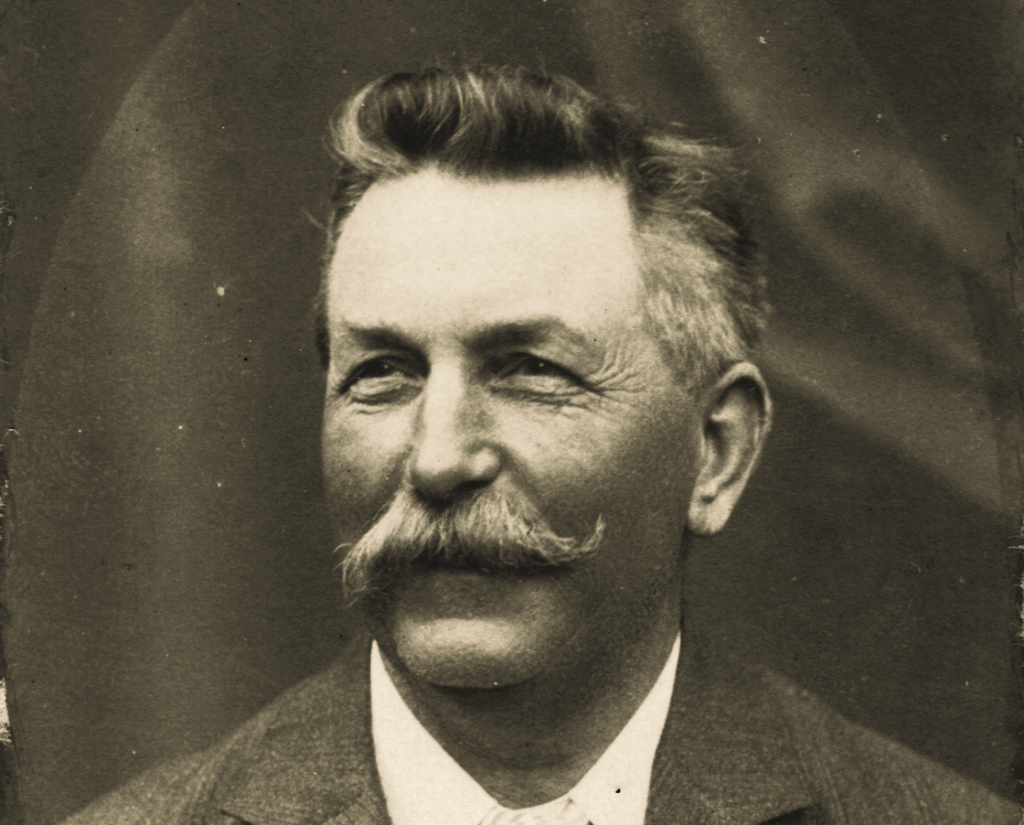
“It is with great pride that I reflect on how Lürssen has evolved into the company it is today,” says Peter Lürssen. “However, this journey has not been without its challenges. We have had one hundred and fifty years marked by trials, challenges and jubilations. There have been storms and successes. However, these success stories do not belong solely to Lürssen as a company. They belong to their people. I would like to take this opportunity to express my sincere gratitude to all our employees – past and present – without whom we would not be here, celebrating 150 years.”
Values have been passed down from generation to generation, and successes have been earned through the expertise and dedication of its people. Not only is Lürssen a family-run business, but many of its trades and crafts are also generational. It is as much a family company in upper management as it is in its production halls.
Lürssen is a company that looks after its own and one that gives back to the wider community in equal measures. Whether through its pursuit of engineering innovations, its support for philanthropic endeavours – such as Blue Marine Foundation – or its efforts to inspire the next generation of engineers through initiatives like the Lürssen Foundation, Lürssen’s commitment to innovation, ocean conservation, and the future of shipbuilding has never faltered since its inception. Lürssen has also retained its founder’s “disruptive” spirit.
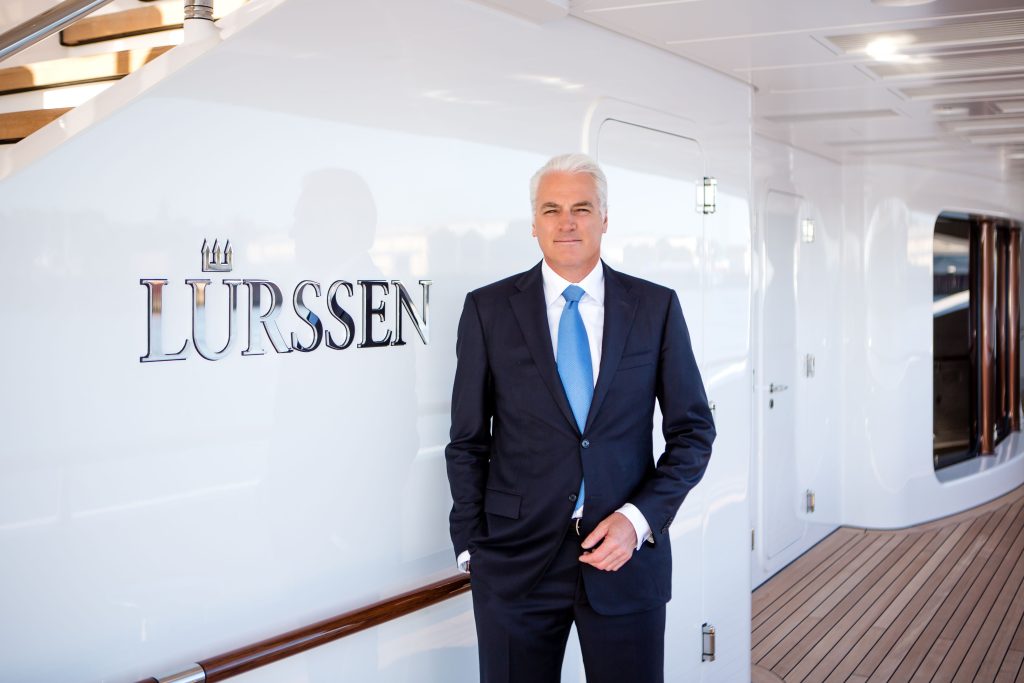
Business was booming for Friedrich Lürssen. The small shipyard in Bremen-Aumund became a magnet not only for competitive rowboats but also for crafts in all forms – workboats, motorboats, lifeboats, and more. Ever the disruptor, when Gottlieb Daimler – who invented and patented the petrol engine for a “horseless carriage” – approached Friedrich Lürssen with a request to build the first boat to be equipped with an engine, he immediately got to work.
In the summer of 1886, the world’s first motorboat was completed, laying the foundation for our industry as we know it today. It was a six-metre masterpiece: beautifully finished and a technical first, fitted with a modified 1.5-horsepower Daimler engine. However, despite her elegantly styled slender bow that swept back into a wide midsection and a well-formed stern, REMS caused chaos on the typically peaceful banks of the River Neckar close to Stuttgart, where Gottlieb Daimler had his workshop. Locals prevented the infamous engine that “was generated by explosions” from reaching the water’s edge for the first test runs of REMS. Undeterred, and characteristic of the young inventor, Gottlieb Daimler installed copper wires and insulators to make the engine look like an electric plant. The ruse worked. The world’s first motorboat was successfully tested, and the agitated locals were none the wiser.
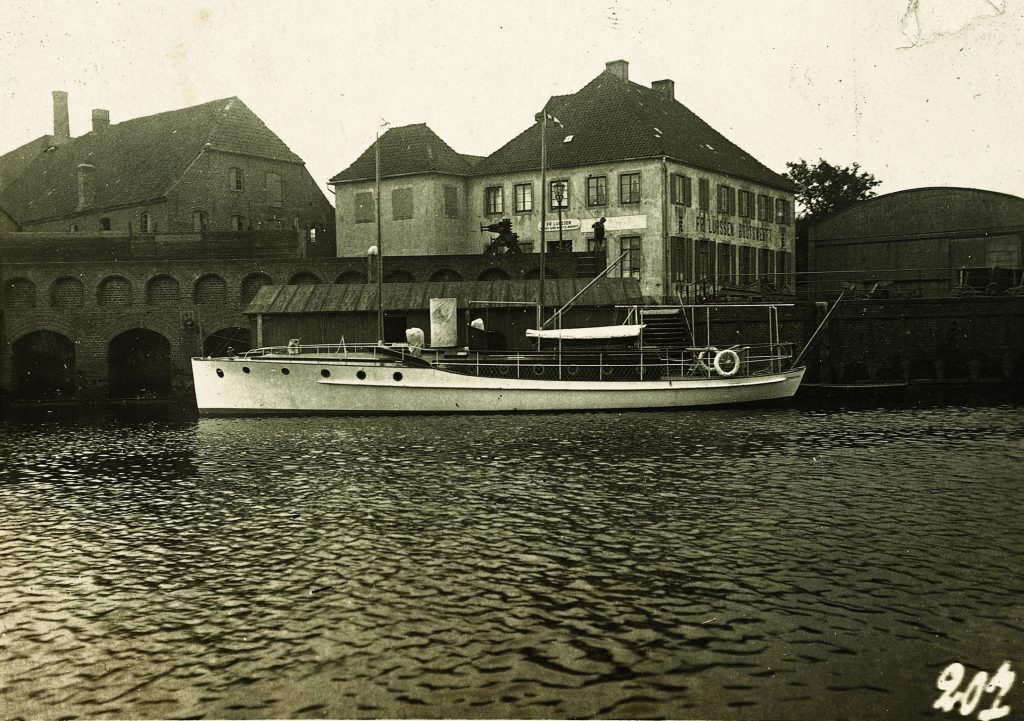
The delivery of the six-metre REMS paved the way for motorboats. Lürssen and Daimler enjoyed a long, fruitful friendship, building and developing ever-larger and ever-more-powerful motor- powered boats. By the turn of the century, Lürssen motorboats had become a common sight cruising the inland waters of Germany. At 19 metres, MARIA-AUGUSTA was one of the largest. She had an elegant sheerline, canoe stern, and a superstructure which integrated a pilothouse. Daimler built a 27-horsepower engine for her, delivering a smooth nine-knot cruising speed.
The motorboat was the first in a long line of pioneering innovations introduced by Lürssen, which have since become industry standards. In 1997, it fitted the world’s first energy-efficient hybrid propulsion aboard the 96-metre LIMITLESS. By 2002, the company was leading research into underwater exhaust systems, reducing backpressure and noise. Shortly after, in 2005, it delivered the 90-metre AIR (now ICE), the world’s first yacht with a pod drive. In 2009, Lürssen introduced an advanced wastewater treatment system based on membrane technology, first used on the 60-metre ARKLEY (now CAIPIRINHA) and now standard on all its yachts. The 147.52-metre TOPAZ (now A+) was also the first to feature a ballast water treatment system.
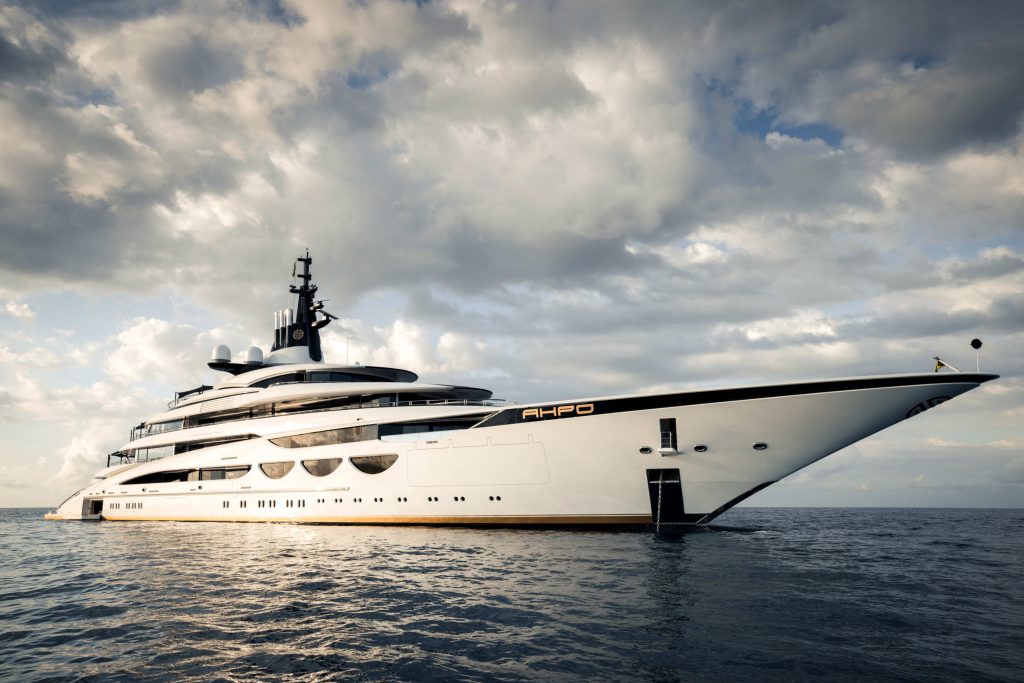
As part of its drive towards more responsible and more sustainable solutions, Lürssen patented an innovative exhaust after-treatment system that reduces NOx emissions without affecting space, weight, noise, or vibration. This has been standard on every Lürssen yacht since 2016. It launched Tesumo – a sustainable teak alternative – in 2020, which is now readily available to the industry and was notably laid across the helideck of one of Lürssen’s most recent deliveries.
Coinciding with its milestone year, Lürssen is preparing to deliver its next step towards an ultimately carbon-neutral future for yachting: the 114-metre COSMOS. Much like its 139-year predecessor, REMS, COSMOS was born from a pioneering and technologically driven client. The client has agreed to the installation of a methanol-powered fuel cell system. The system is laid out to ultimately produce enough power to support the yacht at anchor for 15 days or cruise approximately 1000 nautical miles at slow speed.
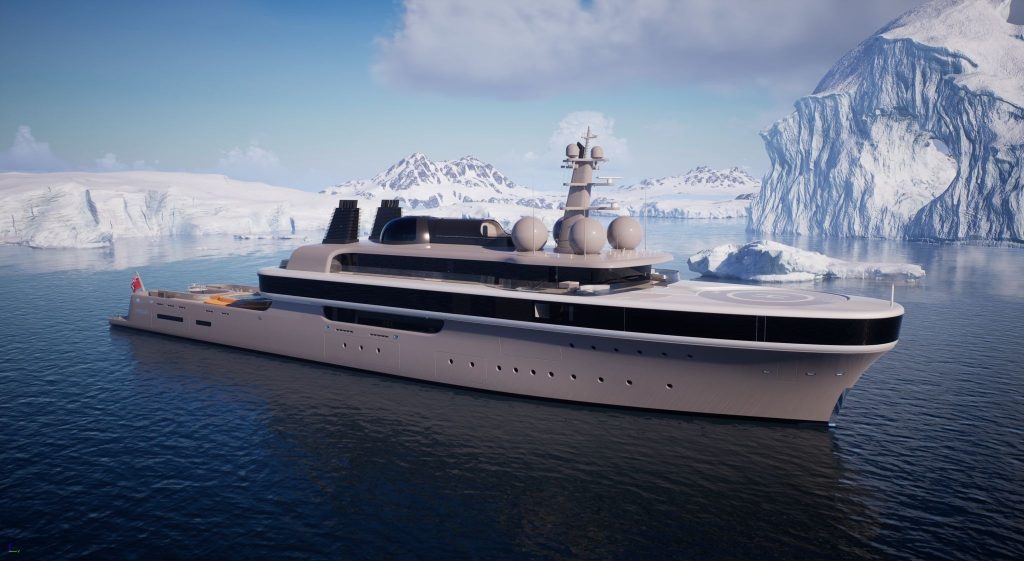
“We have made tremendous progress towards achieving an important goal of mine,” says Peter Lürssen. “It was my great-grandfather who built the first motorboat in 1886, paving the way for yachting as we know it today. My dream is to ultimately build the first yacht without a combustion engine, marking the beginning of a new era for the industry.”
Lürssen devoted much of the 20th century to naval and commercial boatbuilding, and it was not until 1988, under the custodianship of Peter Lürssen, that the company established a dedicated yacht division, committing half of its capacity to building yachts of all sizes. This has proven instrumental in the company’s success in the yacht market.
Since forming its dedicated yacht division in 1988, it has built and delivered 70 bespoke yachts with a total length exceeding 6,500 metres. Today, 35 of the top 100 yachts are built by Lürssen. Amongst these are the 180.61-metre AZZAM, the 156-metre DILBAR, and the 126.2-metre OCTOPUS – respectively, the world’s longest yacht, the largest yacht by volume, and the world’s first explorer yacht.
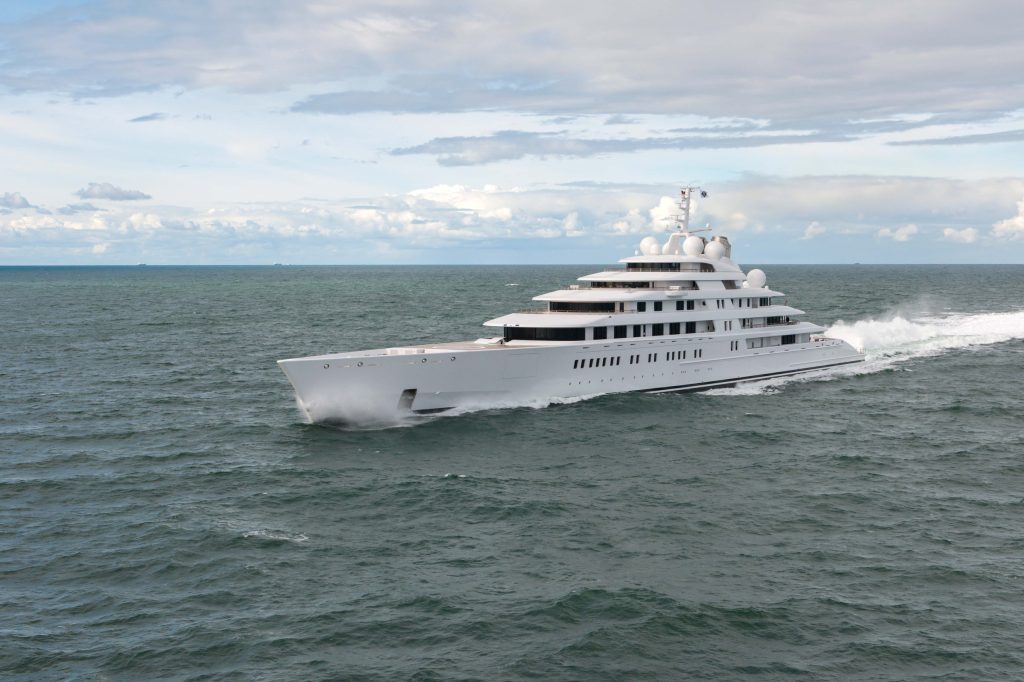
“We don’t set out to build the biggest yachts; we set out to build the best yacht for each client. Clients choose us for our engineering excellence, our ability to think outside the box, and our determination to fulfil their wishes – no matter how unreachable they may seem,” says Peter Lürssen.
The owner of the multi-award-winning 122m KISMET confirmed this commitment: “Lürssen’s position is simple: if you can conceive it, they can do it, no constraints. I love that. The shipyard hits every metric to perfection, especially with technology. The seaworthiness of KISMET is incredible, and I am awestruck by the spaces and workmanship. It is all consistent with Lürssen’s view that there should be no compromises on vision. And no compromises on expectations.”
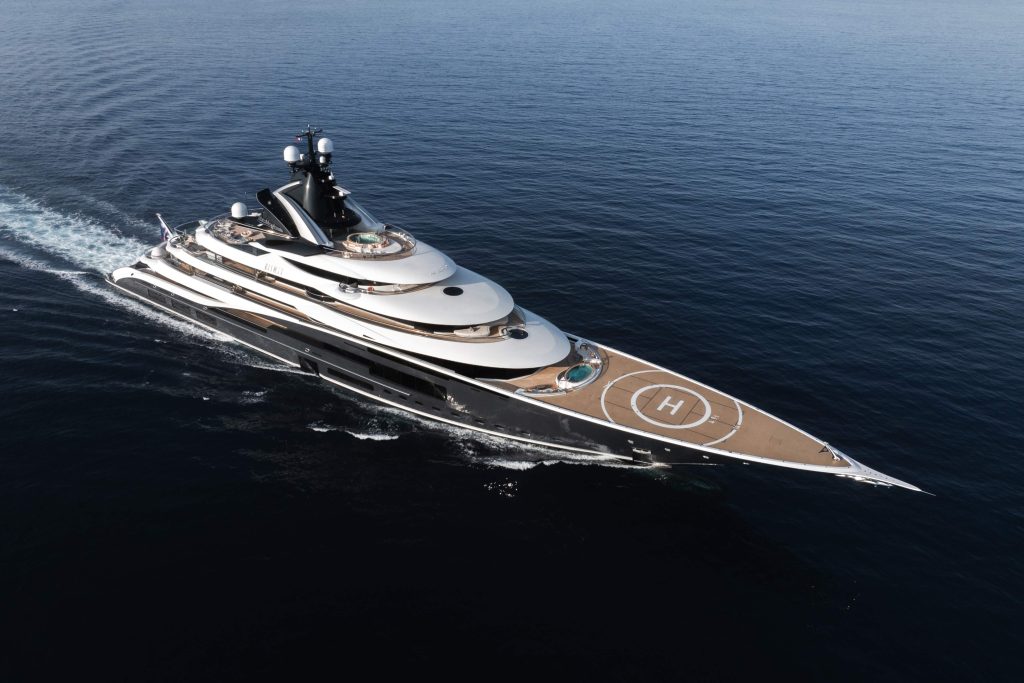
Today, as the company looks to the future, its vision remains aspirational. It has pledged to continue its support for Blue Marine Foundation. Through Blue Marine Foundation, Lürssen has supported 30 global projects, securing commitments to protect over 4.4 million square kilometres of ocean. Meanwhile, through its newly founded Lürssen Foundation, it will support the training and development of select engineering scholars who demonstrate exceptional talent and invest in startups and organisations making a positive impact on the industry and wider communities.
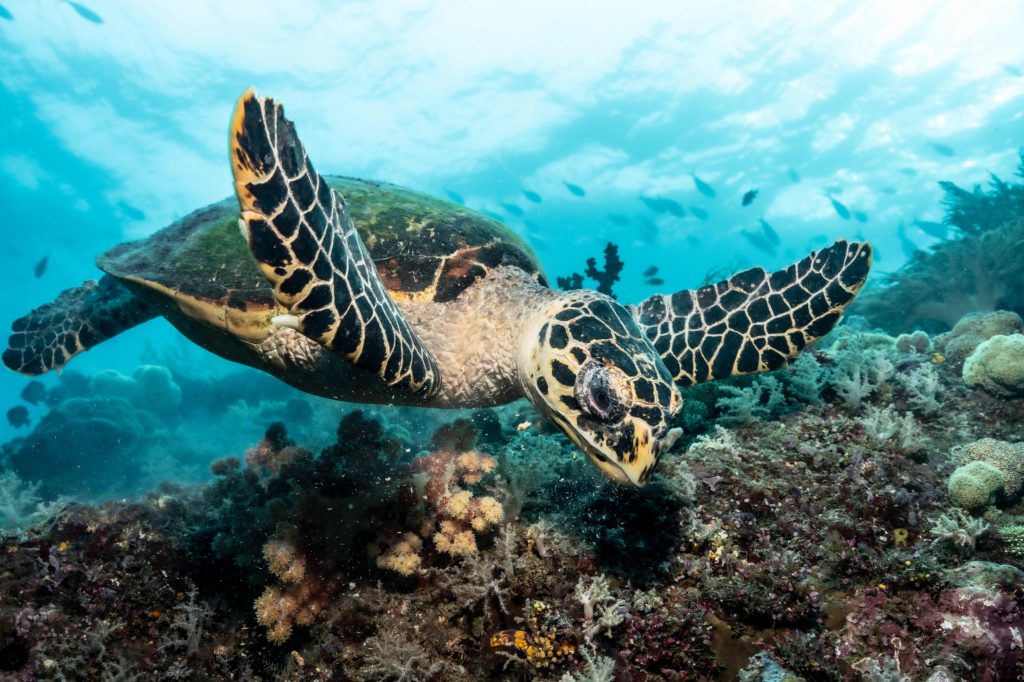
Lürssen employs around 2,000 people and has three shipyards across northern Germany, an engineering and research centre in Croatia, and a sales office in the United States. It specialises in new yacht construction of 60 metres and larger and operates an award-winning refit and rebuild shipyard with second-to-none facilities.
After 150 years of shipbuilding, Friedrich Lürssen’s declaration that “My firm shall be known as a leader in both quality and performance” remains true to this day.
















